The long-standing approach to upland farming of matching traditional sheep breeds to different land types is a tried and tested system.
On Richard Pedley’s farm on the Cumbria-Lancashire border, it is being implemented to a high standard.
Overall, Richard is farming 1,250 acres of rented land with the main block taken out on a 25-year tenancy.
He has 950 Swaledale ewes with 550 of these ewes crossed to Bluefaced Leicester rams to produce Mule lambs. The other 400 Swales are bred pure and there are also 130 homebred Mule ewes which are tupped with Suffolk and Texel rams.
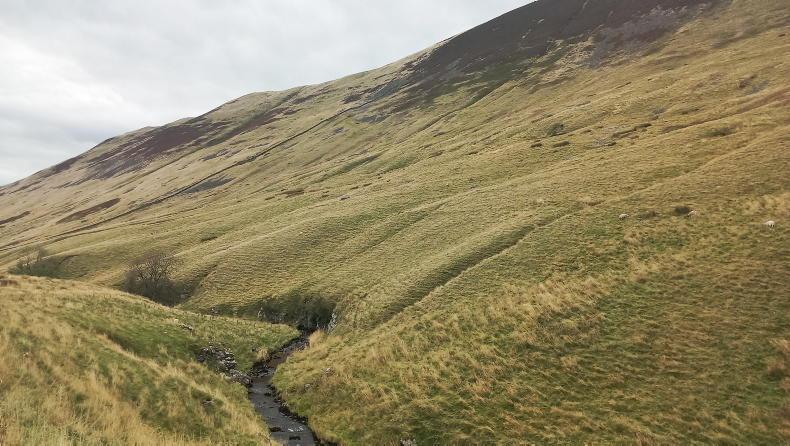
This block of hill land, known as a fell, cannot be grazed from October to April.
When the Irish Farmers Journal visited the farm in early October, Richard was busy preparing five Bluefaced Leicester ram lambs for a pedigree sale the following day.
He had sold his Mule ewe lambs the week before, and his thoughts were turning to the upcoming breeding season where the whole production cycle starts again.
There are 35 suckler cows on the farm too, including pedigree British Blues which have the herd prefix Oak Tree.
The rest are mainly commercial Limousin cows, which are bred to Limousin bulls in their first year, then Blue bulls are used from the second season onwards.
Traditional system
Richard’s farm is part of a traditional stratified system where hardy sheep breeds like Swaledales graze upland areas and produce prolific breeding stock for lowland regions.
However, he is clear that this system of farming, which has been going on for generations, is now facing an existential threat.
The issue stems from changes to farm support schemes in England where farmers in upland areas are losing out significantly.
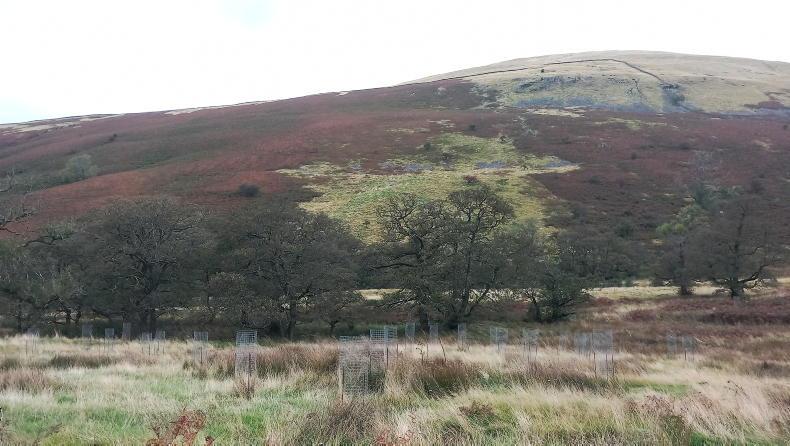
Richard has established wood pasture on this parcel of land under Countryside Stewardship.
The Basic Payment Scheme (BPS) in England is being cut each year and replacement schemes are mainly focussed on delivering environmental measures.
In 2024, BPS payments to all farmers in England will be at least 50% lower than where they were in 2020, and the current plan is to phase out BPS altogether by 2027.
New schemes
Replacement schemes fall under the umbrella of the Environmental Land Management Scheme (ELMS), with the main one for most English farmers being the Sustainable Farming Incentive (SFI).
However, Richard said SFI does not have enough measures that are suitable for upland farms.
“Time is running out for a lot of upland farmers. They are having their BPS cut and there is nothing to replace it with,” he said.
For those that still want to apply, being part of an old agri environment scheme or having land in environmentally designated areas are two factors which can make it difficult to join SFI. Richard points out that both of these issues apply to a lot of hill farmers.
“For over 30 years, upland farmers have been delivering for the environment through old environmental schemes, but they are struggling to find a way out of those schemes into the new SFI.
“The financial hit hasn’t been too bad this year because BPS cuts have been filled by a good hogget price in the spring and then a good lamb trade this autumn. But how long will that continue?”
Richard said farmers that are still stuck on old agri environment schemes should get an immediate payment uplift to help recoup lost BPS money, plus SFI needs an overhaul to make it more suitable and financially rewarding for upland farms.

Richard Pedley is a tenant farmer from the north of England.
He gives the example of Swaledale sheep not being recognised under SFI as a native breed, which means the traditional farming system that has taken place in the uplands for generations is not incentivised under the scheme.
Trees and grazing
Richard is carrying out some measures under countryside stewardship, including “wood pasture” where trees have been planted on a block of hill land and the aim is to eventually graze this ground with cattle once the trees are established.
I was shown a different parcel of hill land that was used to graze dry ewes during the autumn. As part of an agri environment scheme, there are strict rules for grazing this block of land with stocking rate and grazing dates.
No livestock are allowed on the land from October to April, and during the grazing season only 130 ewes can be grazed on the hill at once.
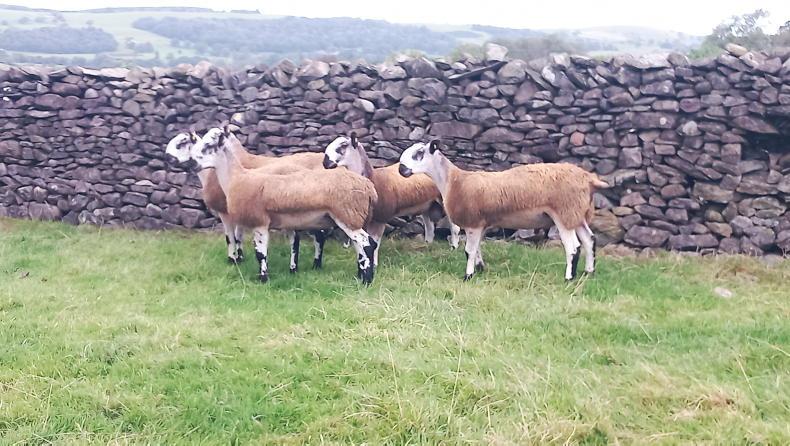
Five Bluefaced Leicester ram lambs were being prepared for a pedigree sale.
Even though there are no sheep on the hill now, there still appeared to be plenty of grass.
Richard has two other blocks of similar land that he can’t put into a scheme like this to claim payments as he would have nowhere to graze ewes over the winter.
“There are limited options for upland farmers. The schemes seem to be tailored to reduce livestock numbers,” he said. He suggests the opposite could happen in some cases too, where farmers will ignore the new schemes and increase stock numbers to make up for lost BPS income.
It means an increased risk of overgrazing on sensitive upland habitats.
Landowners claim money without farmers
The size and structure of farms in England is different to NI.
While farms tend to be larger in England, many are owned by non-farmers and are leased out under long term tenancies.
Richard Pedley said there is a growing number of cases where landowners in upland areas have not renewed tenancies and have started claiming payments themselves.
With lucrative payments available under ELMS for the likes of tree planting and rewilding, some landowners have decided they don’t need farmers and livestock on their land anymore. “There is no evidence to support that taking sheep off hills improves the land for nature.
“It will likely have the opposite effect, because land will become overgrown,” Richard said.
His farm includes grazing rights on several commonages where generations of his ewes have been “hefted,” so they graze within unfenced boundaries.
Richard said there has been a gradual decline in upland farming which pre-dates the latest changes to farm schemes and stems from tight margins in hill farming in general.
He points to a commonage on a hillside where he has grazing rights and said 16 farmers used to graze sheep on it but only three use it now.
Tourism
Tourism is a growing industry in the likes of the Lake District and Yorkshire Dales.
Richard said there has been a trend of landowners converting farmhouses to holiday lets.
It means fewer families are farming in upland areas and those that are left farming take on more land.
It could be argued that the larger scale of farms in England compared to NI has its disadvantages, as there is less opportunity for off-farm employment to supplement incomes.
When you are farming over 1,000 acres of land, you tend to be either all in or all out.
Richard said policy makers need to be aware of the changes that are occurring in the uplands, as it cannot be easily reversed.
“Sheep in the uplands are not something that you can take away and then decide to put back 10 years later,” he said.
I can’t help thinking that farmers in these areas won’t be easily replaced either.
Public goods and
regenerative farming
The thinking behind new farm schemes in England centres around the concept of “public money for public goods”. Making environmental improvements to land is deemed a public good, but producing food is not, because food can be traded for money.
Richard Pedley questions if it is fair to have farm schemes focused solely on the environment, given that farmers are still expected to produce cheap food for consumers.
“The cheap food policy hasn’t changed. There is a demand for lamb and beef. If we don’t produce it here, it will be imported from elsewhere.”
Richard also appears sceptical about the push for so called nature friendly and regenerative farming, pointing out that many of the basic principles have been known and implemented on farms for generations.
“Fields need a rest. Nowhere should be grazed constantly. We have been doing regenerative farming for years, except we just call it farming.”
The long-standing approach to upland farming of matching traditional sheep breeds to different land types is a tried and tested system.
On Richard Pedley’s farm on the Cumbria-Lancashire border, it is being implemented to a high standard.
Overall, Richard is farming 1,250 acres of rented land with the main block taken out on a 25-year tenancy.
He has 950 Swaledale ewes with 550 of these ewes crossed to Bluefaced Leicester rams to produce Mule lambs. The other 400 Swales are bred pure and there are also 130 homebred Mule ewes which are tupped with Suffolk and Texel rams.

This block of hill land, known as a fell, cannot be grazed from October to April.
When the Irish Farmers Journal visited the farm in early October, Richard was busy preparing five Bluefaced Leicester ram lambs for a pedigree sale the following day.
He had sold his Mule ewe lambs the week before, and his thoughts were turning to the upcoming breeding season where the whole production cycle starts again.
There are 35 suckler cows on the farm too, including pedigree British Blues which have the herd prefix Oak Tree.
The rest are mainly commercial Limousin cows, which are bred to Limousin bulls in their first year, then Blue bulls are used from the second season onwards.
Traditional system
Richard’s farm is part of a traditional stratified system where hardy sheep breeds like Swaledales graze upland areas and produce prolific breeding stock for lowland regions.
However, he is clear that this system of farming, which has been going on for generations, is now facing an existential threat.
The issue stems from changes to farm support schemes in England where farmers in upland areas are losing out significantly.

Richard has established wood pasture on this parcel of land under Countryside Stewardship.
The Basic Payment Scheme (BPS) in England is being cut each year and replacement schemes are mainly focussed on delivering environmental measures.
In 2024, BPS payments to all farmers in England will be at least 50% lower than where they were in 2020, and the current plan is to phase out BPS altogether by 2027.
New schemes
Replacement schemes fall under the umbrella of the Environmental Land Management Scheme (ELMS), with the main one for most English farmers being the Sustainable Farming Incentive (SFI).
However, Richard said SFI does not have enough measures that are suitable for upland farms.
“Time is running out for a lot of upland farmers. They are having their BPS cut and there is nothing to replace it with,” he said.
For those that still want to apply, being part of an old agri environment scheme or having land in environmentally designated areas are two factors which can make it difficult to join SFI. Richard points out that both of these issues apply to a lot of hill farmers.
“For over 30 years, upland farmers have been delivering for the environment through old environmental schemes, but they are struggling to find a way out of those schemes into the new SFI.
“The financial hit hasn’t been too bad this year because BPS cuts have been filled by a good hogget price in the spring and then a good lamb trade this autumn. But how long will that continue?”
Richard said farmers that are still stuck on old agri environment schemes should get an immediate payment uplift to help recoup lost BPS money, plus SFI needs an overhaul to make it more suitable and financially rewarding for upland farms.

Richard Pedley is a tenant farmer from the north of England.
He gives the example of Swaledale sheep not being recognised under SFI as a native breed, which means the traditional farming system that has taken place in the uplands for generations is not incentivised under the scheme.
Trees and grazing
Richard is carrying out some measures under countryside stewardship, including “wood pasture” where trees have been planted on a block of hill land and the aim is to eventually graze this ground with cattle once the trees are established.
I was shown a different parcel of hill land that was used to graze dry ewes during the autumn. As part of an agri environment scheme, there are strict rules for grazing this block of land with stocking rate and grazing dates.
No livestock are allowed on the land from October to April, and during the grazing season only 130 ewes can be grazed on the hill at once.

Five Bluefaced Leicester ram lambs were being prepared for a pedigree sale.
Even though there are no sheep on the hill now, there still appeared to be plenty of grass.
Richard has two other blocks of similar land that he can’t put into a scheme like this to claim payments as he would have nowhere to graze ewes over the winter.
“There are limited options for upland farmers. The schemes seem to be tailored to reduce livestock numbers,” he said. He suggests the opposite could happen in some cases too, where farmers will ignore the new schemes and increase stock numbers to make up for lost BPS income.
It means an increased risk of overgrazing on sensitive upland habitats.
Landowners claim money without farmers
The size and structure of farms in England is different to NI.
While farms tend to be larger in England, many are owned by non-farmers and are leased out under long term tenancies.
Richard Pedley said there is a growing number of cases where landowners in upland areas have not renewed tenancies and have started claiming payments themselves.
With lucrative payments available under ELMS for the likes of tree planting and rewilding, some landowners have decided they don’t need farmers and livestock on their land anymore. “There is no evidence to support that taking sheep off hills improves the land for nature.
“It will likely have the opposite effect, because land will become overgrown,” Richard said.
His farm includes grazing rights on several commonages where generations of his ewes have been “hefted,” so they graze within unfenced boundaries.
Richard said there has been a gradual decline in upland farming which pre-dates the latest changes to farm schemes and stems from tight margins in hill farming in general.
He points to a commonage on a hillside where he has grazing rights and said 16 farmers used to graze sheep on it but only three use it now.
Tourism
Tourism is a growing industry in the likes of the Lake District and Yorkshire Dales.
Richard said there has been a trend of landowners converting farmhouses to holiday lets.
It means fewer families are farming in upland areas and those that are left farming take on more land.
It could be argued that the larger scale of farms in England compared to NI has its disadvantages, as there is less opportunity for off-farm employment to supplement incomes.
When you are farming over 1,000 acres of land, you tend to be either all in or all out.
Richard said policy makers need to be aware of the changes that are occurring in the uplands, as it cannot be easily reversed.
“Sheep in the uplands are not something that you can take away and then decide to put back 10 years later,” he said.
I can’t help thinking that farmers in these areas won’t be easily replaced either.
Public goods and
regenerative farming
The thinking behind new farm schemes in England centres around the concept of “public money for public goods”. Making environmental improvements to land is deemed a public good, but producing food is not, because food can be traded for money.
Richard Pedley questions if it is fair to have farm schemes focused solely on the environment, given that farmers are still expected to produce cheap food for consumers.
“The cheap food policy hasn’t changed. There is a demand for lamb and beef. If we don’t produce it here, it will be imported from elsewhere.”
Richard also appears sceptical about the push for so called nature friendly and regenerative farming, pointing out that many of the basic principles have been known and implemented on farms for generations.
“Fields need a rest. Nowhere should be grazed constantly. We have been doing regenerative farming for years, except we just call it farming.”








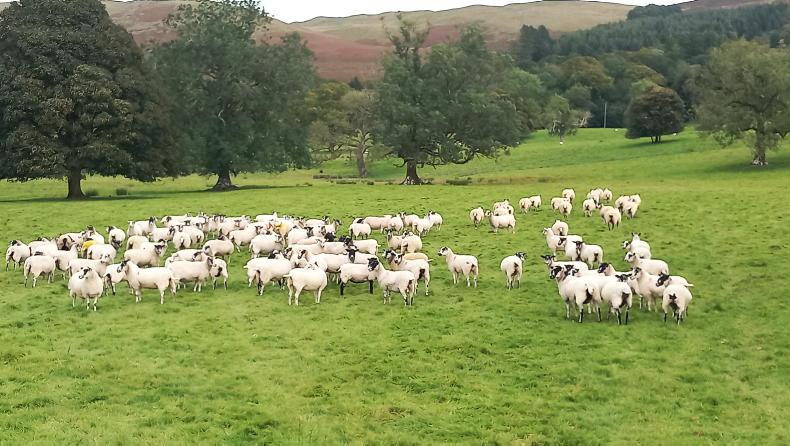
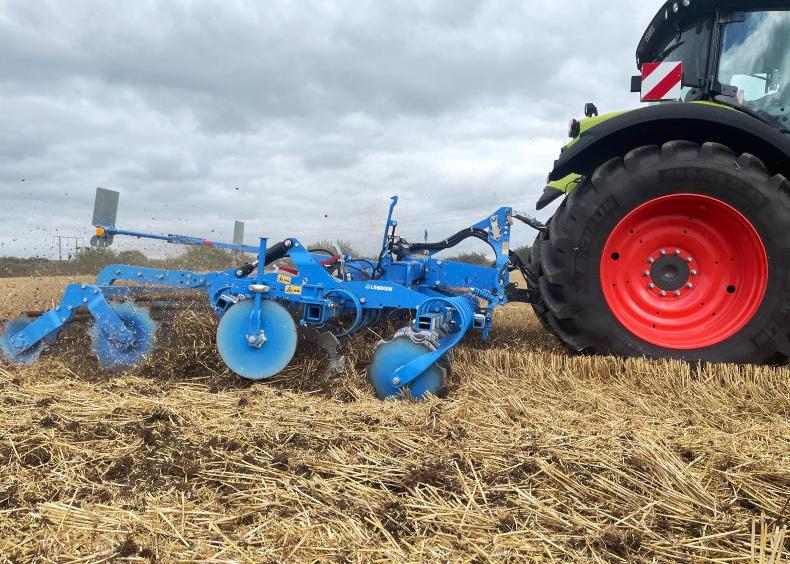

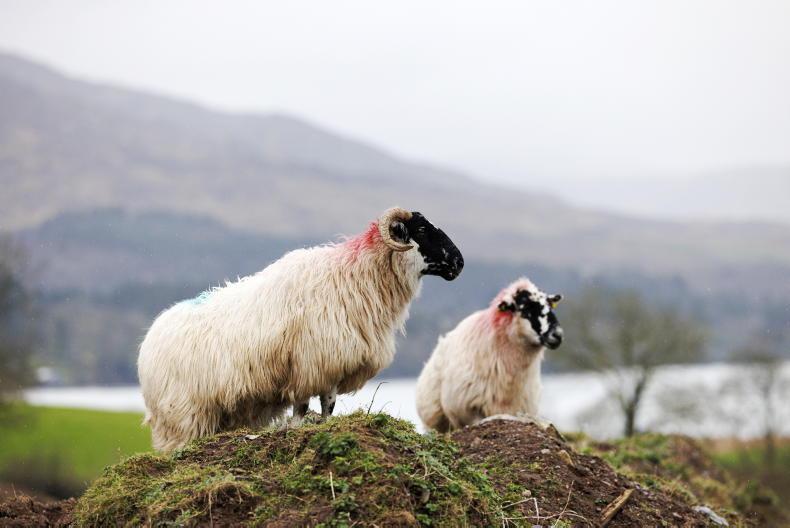
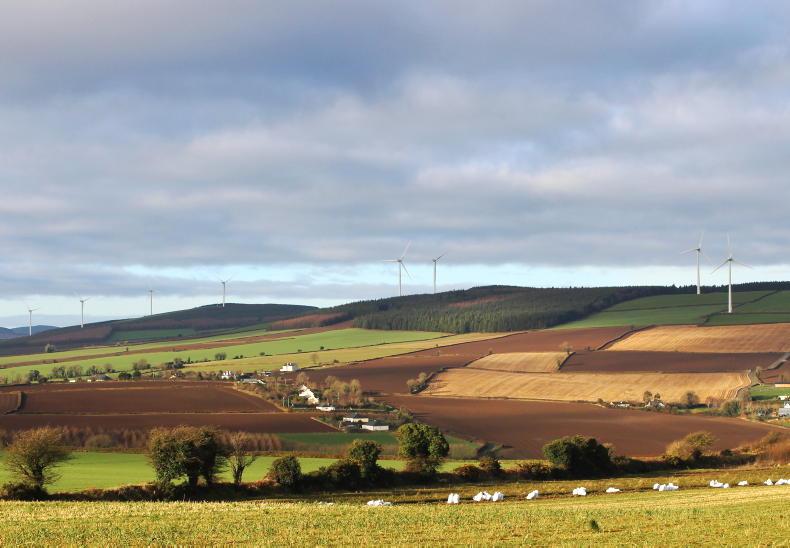
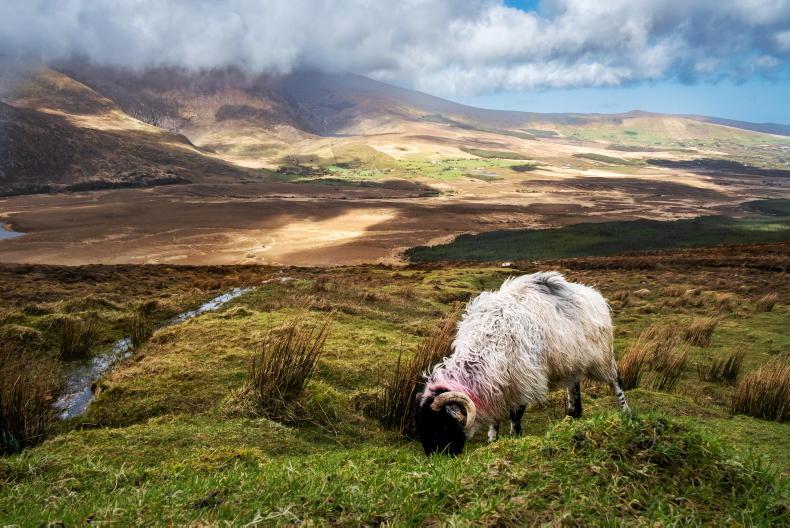
SHARING OPTIONS